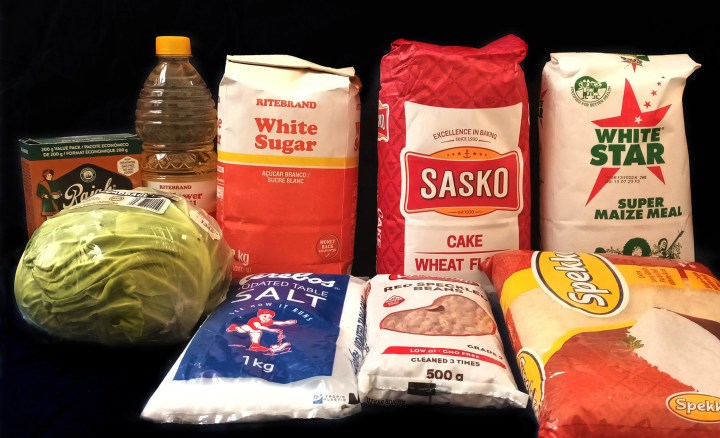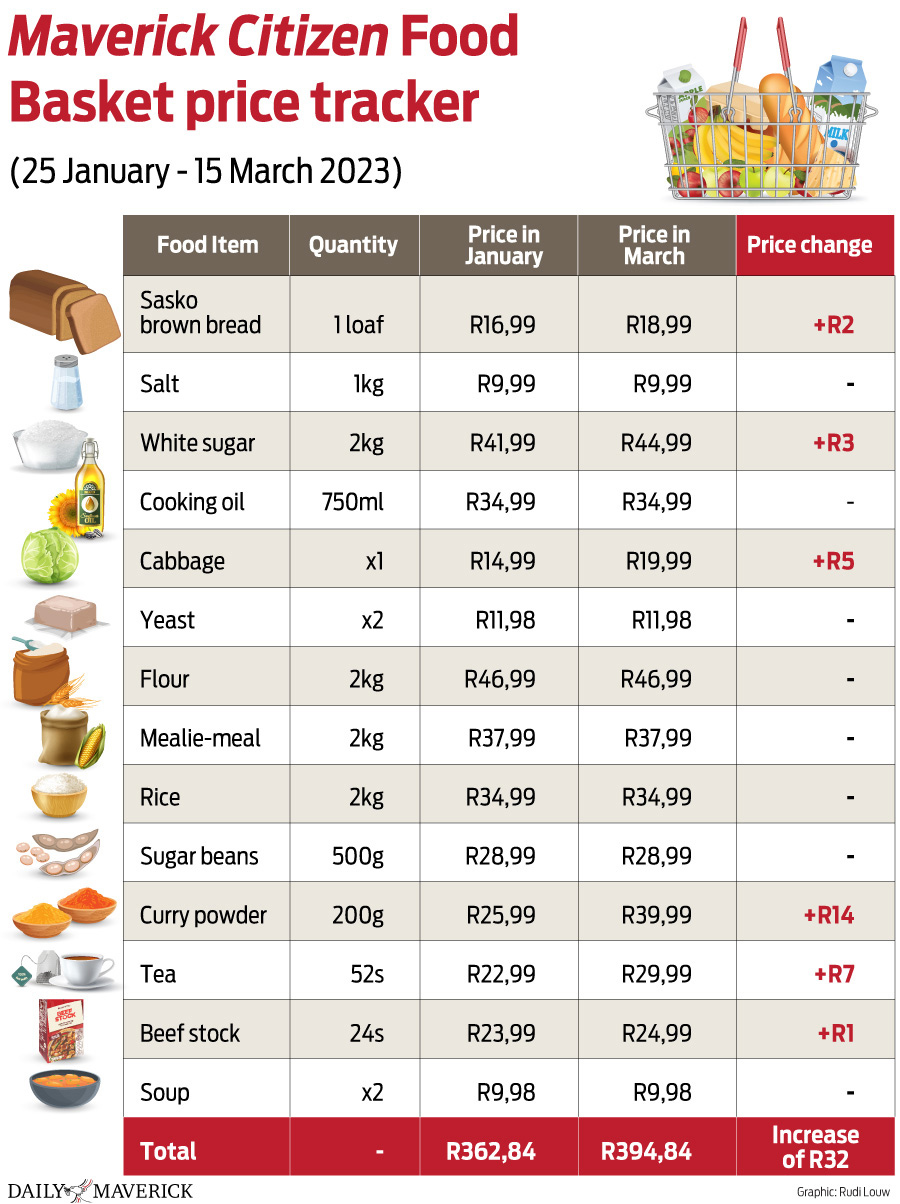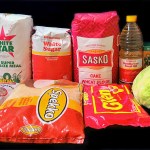FOOD BASKET CHECK
Social grant beneficiaries can’t afford transport to collect monthly payment

Factors such as the climate crisis, cross-border trade and fertiliser prices will see food prices skyrocket if not mediated, according to the African Market Observatory Price Tracker.
Millions of social grant beneficiaries were affected by a glitch that resulted in their January grant payments being delayed by days. Many beneficiaries borrowed money to travel to collect the grant, only to come back empty-handed.
One such beneficiary is Mthobisi Maphumulo, whose return trip from Illovu township to Durban Central costs R44, or he could go to the closest mall in Amanzimtoti (which has fewer options for withdrawal spots, making queues long), which still sets him back about R30 for a return trip via taxi.
Meanwhile, Daily Maverick’s monthly Food Basket Check indicates that R350 Social Relief of Distress (SRD) grant recipients and other grant beneficiaries can’t afford multiple trips to town as these eat into their food money.

There was an increase of R32 in our food basket of 14 essential items. Consumers have been told to brace themselves for more food price increases. (Graphic: Rudi Louw)
Our latest food basket is R32 more expensive than the previous one, costing almost R50 more than the R350 SRD grant. Beneficiaries who only have this money as a source of income borrow from relatives or neighbours to access it.
According to the African Market Observatory Price Tracker, climate change, lack of intracontinental trade, and higher than average fertiliser prices will push food prices higher towards the end of the year in southern Africa. There is a chance that the El Niño weather pattern will return, exacerbating extreme weather around the world, and bringing drought to southern Africa.
“In addition to adapting to extreme climate change weather, African countries also face the challenge of growing agricultural production to meet food demand, within and across borders.
“To improve the efficiency of cross-border trade, improved transport and infrastructure and reduced restrictions on the trade of goods are critical requirements. Intracontinental trade in Africa accounts for less than 13% of the continent’s total trade. This compares poorly with intracontinental trade of 67% in Europe, 64% in Asia, and 44% in the Americas,” the report reads.
Visit Daily Maverick’s home page for more news, analysis and investigations
The monthly food price tracker is an initiative of the African Market Observatory of the Centre for Competition, Regulation, and Economic Development at the University of Johannesburg, and its partners. It summarises key trends in prices in east and southern Africa (ESA) for selected staple food products.
“The high fertiliser prices add a further strain to production volumes in the region. In 2022, high fertiliser prices meant lower usage, impacting yields and farmers’ profits across the ESA region. Countries in the region have been looking for ways to ensure an adequate fertiliser supply at reasonable prices.
“If fertiliser availability and prices in the region do not improve rapidly, then the next harvest will be negatively affected like the previous one, resulting in high food prices. This will see even more people fall into severe poverty, increased hunger, and malnutrition.
“Countries need to take urgent steps in response to the high fertiliser prices to support agricultural markets in the region,” the report read.
With the National Minimum Wage being R3,000 to R3,700 as of February 2023 (20 working days), people are spending 56% of their monthly salaries on food, according to the latest Household Affordability Index.
The average cost in February of a household food basket with 44 essential food items was R4,928.34 — 0.2% higher than in January and 13% more than this time last year. Essential goods such as maize meal, cooking oil, and beans have seen increases ranging from 28% to 32% year-on-year.
Other experts have corroborated that South Africa faces a special set of challenges such as load shedding, corruption and the weaker rand that exacerbate challenges in securing a nutritious plate of food for South African families.
Whether it’s for beneficiaries of grants, the working class or the shrinking middle class, nutritious food continues to be an unaffordable luxury. DM/MC

















WHY does the system of queues for cash still exist in the era of free bank accounts?